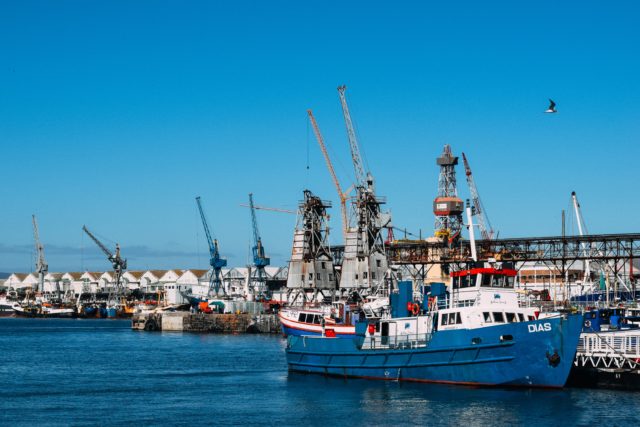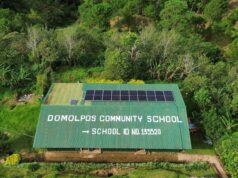The Philippines is one of the fastest urbanizing countries in Asia. Between 1977 and 2012, the number of cities in the country has grown from 61 to 143, which is an increase of 134 percent. As of the end of 2022, the Philippines has a total of 148 cities, 33 of which are highly urbanized cities (HUCs) or areas with a population of over 200,000 and an annual income of more than fifty million pesos. The remainders are independent component cities (ICC) and component cities (CC).
Cityhood comes with plenty of benefits. These include higher autonomy, a closer and more responsive government, and more efficient delivery of public services. These, in turn, can improve access to education, health outcomes, access to employment opportunities, and overall quality of life. At the same time, urbanization comes with its own set of issues. For one, there’s an immediate need for the area’s water infrastructure to keep up with the rapid growth of the community it supports. As demonstrated in many places in the Philippines, a place that is unable to match the level of development of its water infrastructure with its rate of urbanization is bound to experience the following challenges:
Growing Pressure on Water Resources
Population growth, changing lifestyles, and economic growth, among other factors, contribute to the ever-increasing burden on water supply systems. As an area becomes more urbanized, the volume of water it needs to sustain its domestic, commercial, and industrial activities also increases. The challenge of meeting the growing demands for water can be felt in places where the resource is already scarce to begin with, especially during the dry season. In times of water shortage, public and private suppliers may have to ration water to their customers so that there’s enough to go around. It’s also an option for them to tap into distant freshwater sources to meet demands. The people who are beyond the service areas of these suppliers, on the other hand, often have to rely on private sources such as wells or rainwater cisterns to supply their households with water.
Water shortage is an issue that’s expected to significantly worsen in the coming years. It makes perfect sense then that government and infrastructure developers are exploring various means of meeting this ever-present challenge now. One of the solutions that public and private organizations are looking into is desalination or the removal of excess salts and minerals from water. To alleviate water shortage, facilities like the desalination plant Aboitiz InfraCapital proposes to build in Metro Cebu can convert saltwater into freshwater. Considering that the Philippines is an archipelago, desalination can make it much easier for numerous seaside cities and communities to access freshwater even during times of drought.
Lack of Safe Sanitation Facilities and Integrated Networks
It’s worth noting that about a third of the world’s population lack access to safe sanitation facilities. This is especially true in developing nations where many people rely on decentralized or self-provided sanitation services that lack any form of connection with central authorities. Coincidentally, according to UNESCO’s 2015 estimates, about a third of all the river systems in Africa, Asia, and Latin America have severe cases of pathogen pollution due to exposure to human and animal excretions. This puts the health of millions of people at risk. Clearly, there’s a need for improved sanitation facilities and networks, especially in urbanizing areas.
As a city grows, so should its water infrastructure’s capability to connect sanitation facilities and treat wastewater generated by its domestic population. Meanwhile, commercial and industrial facilities should be encouraged to comply with the standards for treating non-domestic wastewater before it is discharged into the sewerage system. LIMA Estate in Malvar, Batangas, demonstrates that it’s possible for industrial parks to put up their own wastewater treatment facilities. They can also conduct water quality monitoring to ensure that the water supply in their areas of operation are not negatively affected by their industrial activities.
Addressing Water Pollution and Treating Wastewater
Water pollution is a widespread issue that has immediate and long-term impacts on an urbanizing community’s health and water supply. According to UNESCO, 80 percent of the world’s wastewater, largely in its untreated form, is dumped back into the environment. On top of this, other forms of pollution also eventually make their way into water sources, as pollution from land and air can eventually seep or settle into bodies of water. These pollutants can come in the form of trash, parasites, bacteria, and chemicals, and drinking contaminated water can lead to digestive issues, skin problems, neurological challenges, and even the development of certain types of cancers. Aside from this, water pollution can reduce the volume of freshwater that the community can readily use.
Addressing water pollution requires a systematic approach from the community and public and private organizations. Water infrastructure developers can do their part by treating wastewater as a renewable resource instead of letting it pollute other waterways and bodies. This can be done by fast-tracking the development of wastewater treatment facilities and instituting wastewater treatment as a standard service for the communities that they serve. Lima Water Corporation in LIMA Estates is one such facility that offers end-to-end water and wastewater treatment services. By treating wastewater as a renewable resource and preventing it from polluting water sources, the facility is able to sustainably meet the demands of its customers even during water shortages. It’s also making a solid step in securing the long-term health of the community that it serves.
Increase in Water-Related Natural Disasters
Many cities and urbanizing areas in the Philippines are not only prone to water shortages, but they can also be severely affected by water-related natural disasters like flooding. There are many factors that contribute to urban flooding, chief of which is the lack of adequate drainage systems in an urban area. During high-intensity rainfall, a drainage system might not be able to keep up as it does not have the capacity to lead large volumes of excess water away from cities. This causes flooding, which can then disrupt day-to-day activities and in some cases, damage property and cause injuries and casualties.
Addressing urban flooding requires coordination between the local government and water infrastructure developers. These two entities can work together to expand the capacity of their community’s sewage network. They can also come up with dedicated spaces and facilities for holding floodwater in such a way that it will not cause property damage or casualties. With the right system in place, the excess water can even be stored and treated for the use of the community. The residents and businesses in the urban area, on the other hand, can do their part in ensuring that their drainage system will not be impeded by debris and pollution.
Urbanization is a global phenomenon. Between 1960 and 2020, the urban population increased from 0.8 billion to 4.4 billion. By 2050, the number of urban dwellers is expected to reach 6.7 billion and comprise 68.4 percent of the global population. With these projections in mind, it’s important for today’s communities, governments, and infrastructure developers to anticipate the future water needs of urbanizing areas. As early as now, countries like the Philippines should set a solid foundation for water and sewage networks that can keep up with the growth of its urbanizing areas and established cities.





